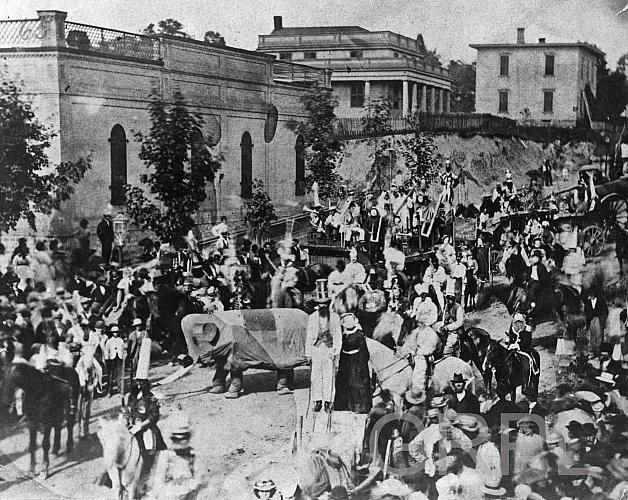GRAND RAPIDS, Mich. — A time-honored, candy-covered, star-spangled tradition on Independence Day used to look a lot uglier.
In the 19th century, the Parade of Horribles descended upon Fourth of July parades across America, including in Grand Rapids, with its participants dressing up in grotesque masks and costumes as a form of social and political satire.
Believed to be founded in the 1850s, the first Parade of Horribles spoofed the Ancient and Honorable Artillery Company of Massachusetts, which yearly held a summertime parade honoring military officers and politicians. Put off by the high-class affair, the residents of a nearby town mocked the celebration, dressing up in off-putting attire. Thus, the Parade of Horribles was born.

Decades later, when Grand Rapids celebrated the centennial anniversary of America, the horribles made a costumed appearance, as they often did.

That Fourth of July weekend, the city had planned a three-day event featuring parades, fireworks, live entertainment and a circus. Above Campau Square, an arch stretched 64 feet wide and 70 feet tall, and similar patriotic arches were placed above Monroe, Canal and Bridge Streets, per the Grand Rapids Historical Commission (GRHC).

Ahead of the celebration, the GRHC says the police department warned people of "an unusual number of roughs, rowdies, house-thieves and three-card Monte-men," asking those downtown to "keep an eye and hand upon your pocket."
In his book, History of the City of Grand Rapids, author Albert Baxter called the horribles a "laughable sight" and a "fantastic procession."
One photo from an 1870s-era Grand Rapids Independence Day celebration shows a crowd of masked people gathered together on Lyon Street, seemingly led by a pair of fake elephants pulling an ambulance cart: a laughable sight, indeed.

Further north, the Lake County Star advertised a Parade of Horribles at a centennial celebration in the town of Baldwin, along with wheelbarrow and potato races and "fireworks in the evening."
The Parade of Horribles are named in multiple Michigan newspapers from around the time, including the Belding Banner (1899), Alma Record (1909) and Times Herald (1927).

While these satirical spectacles seemed to disappear from the state in the mid-20th century, some New England towns still honor the tradition.










